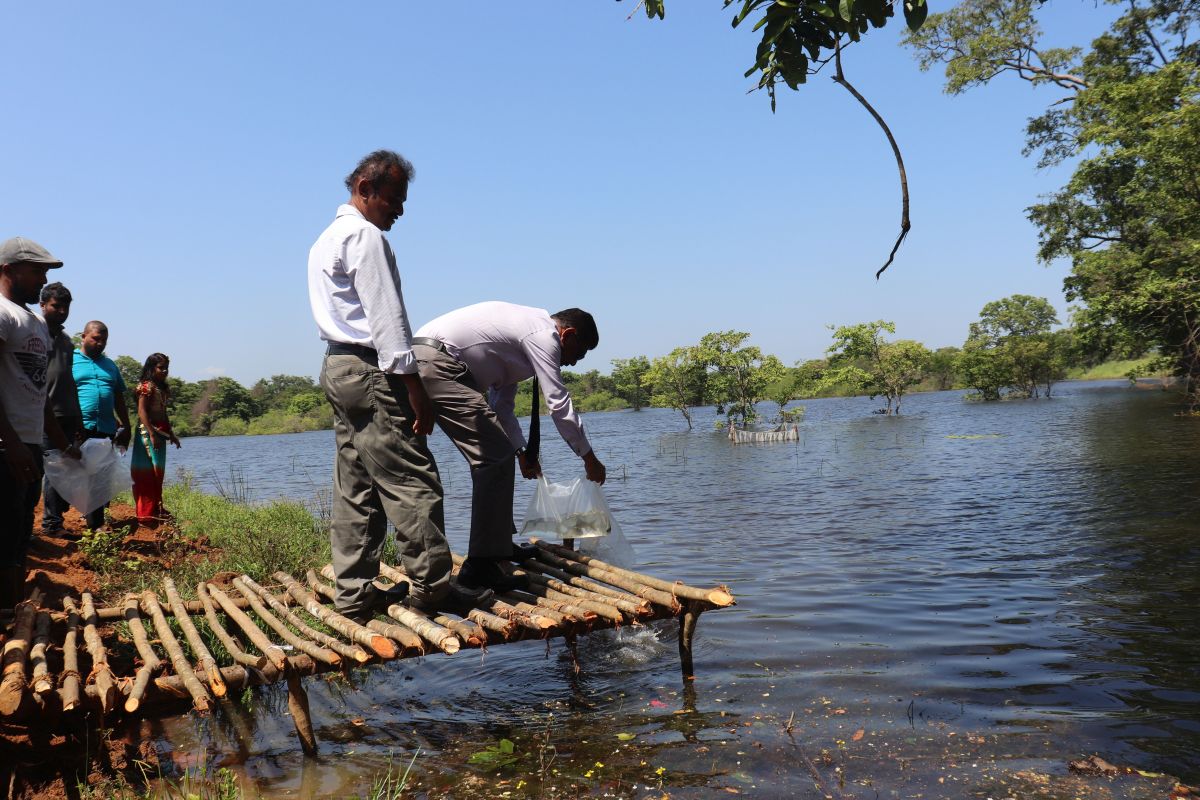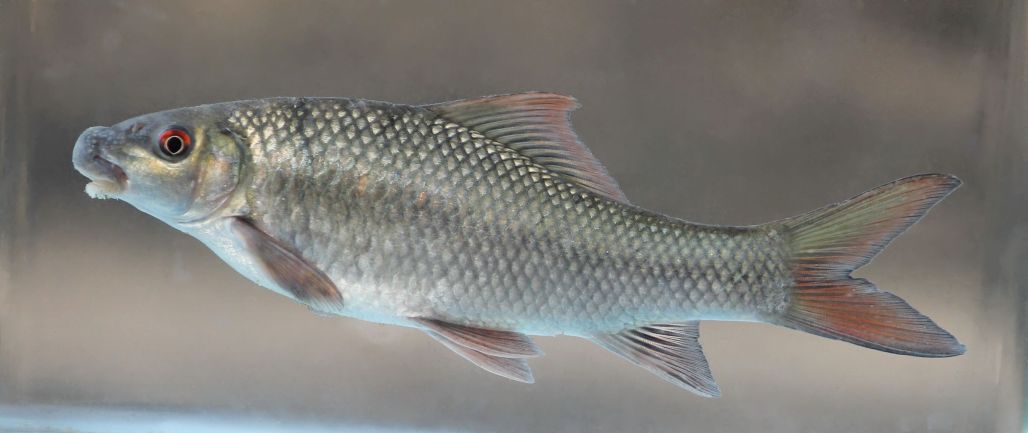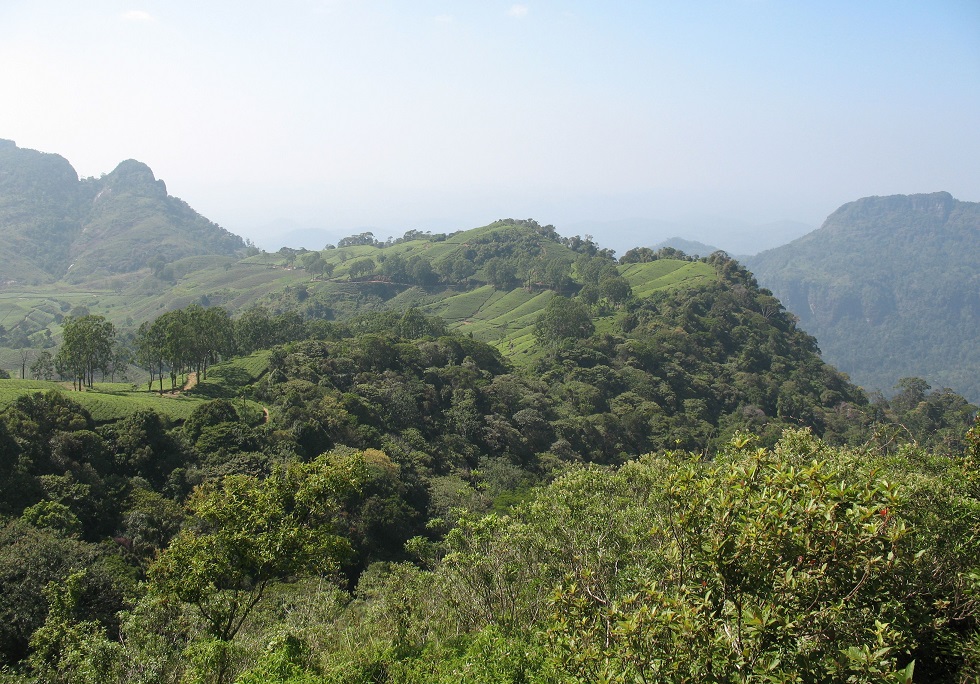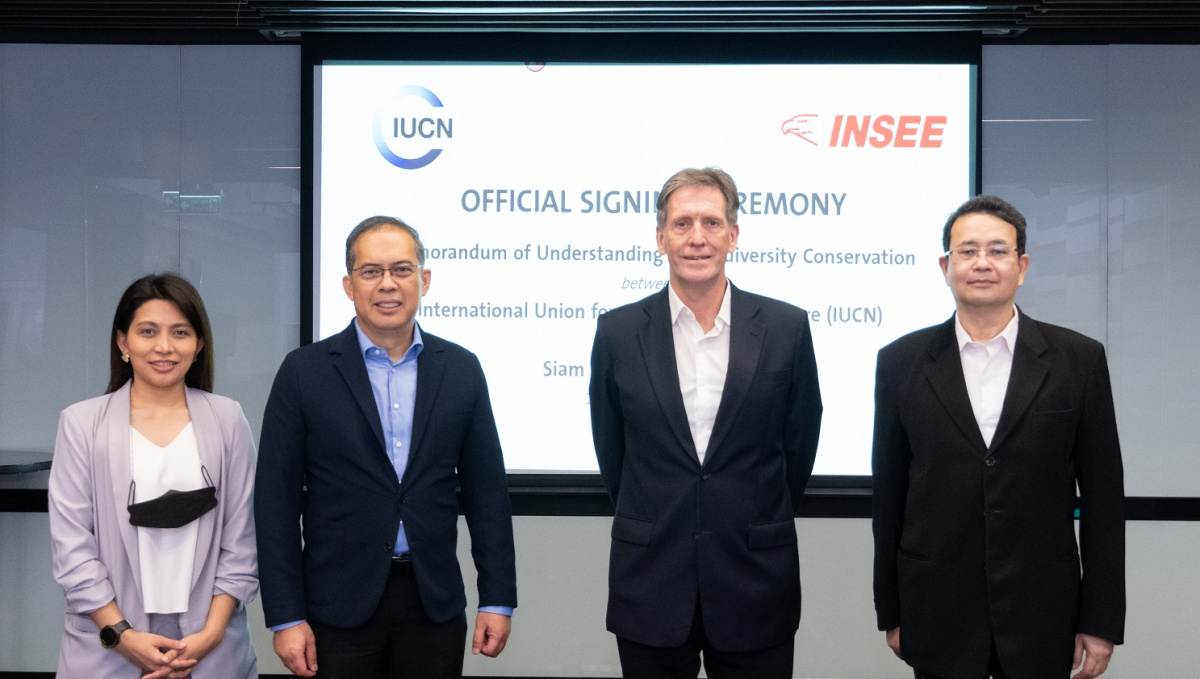A watershed moment: reintroducing 30,000 juveniles of endangered Redfin labeo in Sri Lanka
On the occasion of International Biodiversity Day on 22 May 2023, IUCN Sri Lanka Office co-organised an event with the Ministry of Environment (MoE) to release an initial stock of 3,200 out of 30,000 captive-bred juveniles of Redfin labeo back into their native habitats. The release took place at the Thumbikulama Tank, located in the uppermost catchment of the Malwathu Oya basin in Habarana, a small city in the North Central Province. With more reintroductions to follow, this event marked a watershed moment in Sri Lanka’s conservation history.
The release was held as part of the ‘Managing Together’ project, for which IUCN partnered with MoE, United Nations Development Programme (UNDP), the Department of Wildlife Conservation (DWC) and the Forest Department (FD). The event saw the participation of representatives from the Sabaragamuwa University of Sri Lanka (SUoSL), the National Aquaculture Development Authority (NAQDA) and the 'Healthy Landscapes Project' as well. The project is funded by the Global Environmental Facility (GEF) and IUCN supports MoE in its execution.
The Redfin labeo (Labeo lankae) is endemic species of freshwater fish restricted to the Malwatu Oya, Kala Oya, and Perararu River Basins of Sri Lanka. The IUCN Red List of Threatened SpeciesTM lists this fish as Endangered because threats to its survival - such as agricultural development in the area, threat of Alian Invasive Species - are likely to continue.
In Sri Lanka, Redfin labeo is also known as Thambalaya, Thambalawanna, Galkatuwa, and Sevela Kanaya. First recorded in 1889, the species was a significant source of food at the time and was widely available until the 1980s. With only one specimen collected from Kala Wewa by 1988, the species was classified as Critically Endangered (CR) on the Global Red List in 1996 and then on the National Red Lists in 2007 and 2012. The species was rediscovered in five locations between 2012 and 2019 and downlisted to Endangered (EN) in the 2019 global assessment and the 2020 national assessment.
IUCN Sri Lanka Office has taken the lead in protecting the species from extinction. It conducted a comprehensive survey of the Malwathu Oya basin and its adjacent water bodies to determine the species’ natural distribution. Identifying 21 potential locations as suitable habitats, IUCN then developed a ‘Species Recovery Action Plan’ in 2019 based on the findings.
Following the plan, the Department of Livestock Production at SUoSL, in collaboration with NAQDA, conducted research on the species’ breeding behaviour, reproductive biology, and environmental requirements to develop effective breeding techniques in a controlled setting. Breeding facilities at the NAQDA Aquaculture Development Centre in Dambulla were used, complementing the knowledge gained through decades of experience. The breeding attempt led to approximately 30,000 offspring in the first phase, and the juveniles were ready for release into their natural habitats by mid-May 2023.
The Managing Together project developed the reintroduction plan as part of the Species Recovery Action Plan with the assistance of SUoSL, NAQDA, and IUCN experts in accordance with the IUCN Guidelines for Reintroductions and Other Conservation Translocations. Obtaining prior approval from the Department of Wildlife Conservation, this plan fell under the "reinforcement and reintroduction within a species’ indigenous range" category. Reintroduction aims to re-establish a viable population of the focal species within its indigenous range. Furthermore, the project has given special attention to the implementation and post-release monitoring.
Meanwhile, suitable habitats for releasing the fish were identified based on an IUCN survey. As the first step, the Thumbikulama Tank was chosen to release the initial stock of 3,200 juveniles. This choice was made due to its similarity to the species’ natural habitat conditions and its location in the uppermost catchment of the Malwathu Oya basin, surrounded by dense forest. By reintroducing the Redfin labeo into an upstream water body, it is expected to help the species expand to a wider area within its native range.
In addition, 18 additional sites within the same basin have been identified for future reintroductions. Following the success of the initial reintroduction, all stakeholders are eager to move on to the second phase, which aims to reintroduce 100,000 Redfin Labeo juveniles to their natural habitats.
For further reading:
https://iucn-ctsg.org/wp-content/uploads/2017/12/new-rsg-reintro-guidelines-2013.pdf





